Having those ugly black tire marks on your car can be annoying, especially if they won’t come off when you hit it with a power washer.
So, how do you get those black marks off your vehicle without ruining the paint? It’s tricky, doing it wrong can ruin your paint, so keep reading to learn the proper method!
With the right rubbing compound and some smooth crafty hand or wheel polishing, you can remove tire marks without leaving any paint damage behind. With a quick trip to the parts store for some common inexpensive items, you will be able to remove tire marks, bird droppings, and other problematic paint scares.
If you’d like to learn how to remove tire marks from your car as well as other related facts, keep reading for more tips and information!
Whether from a bike tire, bike handlebars, a basketball, or anything else that might leave some nasty scuff marks, getting them out can be a little challenging.
Most of the time, WD-40 and a lint-free cloth with some texture to it can do the trick.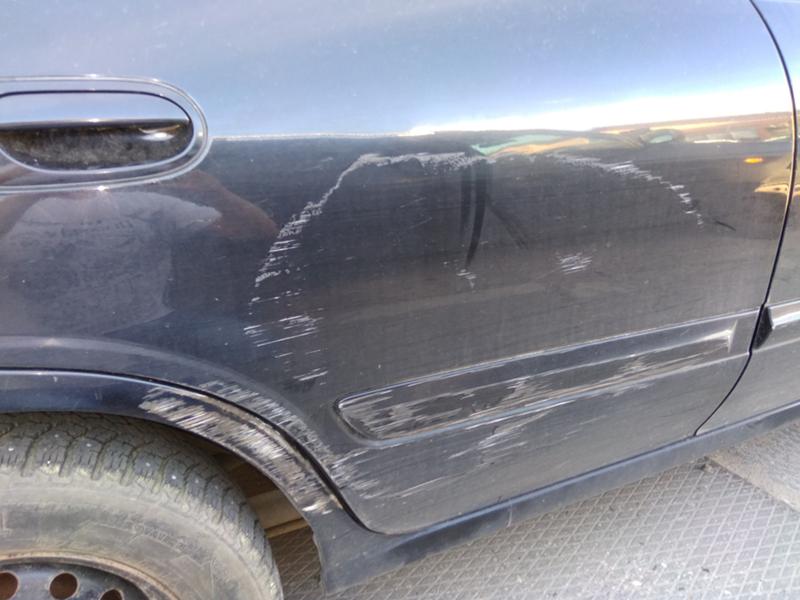 However, remember to use a circular motion when rubbing against the vehicle.
However, remember to use a circular motion when rubbing against the vehicle.
WD-40 could be a temporary fix for very particular events, but they don’t remove scratches. Rather, WD-40 can hide scratches as long as it’s not wiped off.
In fact, with one good wash or rain, all the scratches that seemed to disappear from WD-40 will reappear when it’s washed off.
Rubber marks and rubber scratches are different, and therefore must be removed differently.
Rubber marks are left on top of the paint, meaning you need to get rid of the mark and clean the area.
Rubber scratchers, however, are underneath the rubber mark. To cover these scratches, drivers can use WD-40, but will have to use some type of waxed compound to get underneath the clear coat and rub out the scratch.
After you have compounded the area and removed the scratches, you’ll need to wax in some protected polish over the compounded area to bring back the shine.
While Magic Erasers do a good job on car interior goo and grime, do not use one on the exterior of your vehicle.
The Magic Eraser’s coarse abrasiveness will ruin your vehicle’s paint job, which will add additional repairs to your vehicle.
Goo Gone will work for removing tire marks, road grime, and other nasty car problems. However, this is a heavy solution, so make sure you use it with soap and water.
Rubbing alcohol is far too potent to use alone, and must be diluted between 10-percent and 15-percent before it can be applied to a vehicle’s paint.
Without this dilution, the full potency of rubber alcohol will surely ruin, if not remove, the paint on your vehicle. Also, rubbing alcohol should never be used on freshly painted vehicles (which goes for all other heavy cleaning agents).
To learn more, you can also read our posts on how to clean whitewall tires, if you can spray paint hubcaps, and homemade tire shine.
There are a lot of cleaning agents out there that work hard at helping you get tire marks and other rubber, gooey substances off your car’s paint. If done the right way, you will not only get the substances off the paint, but you won’t leave any permanent damage behind.
However, Make sure you read the directions and know what the best practices are for getting rid of the marks on your car without ruining the paint.
social
My husband got hit on the interstate by a piece of tire in the road. It left tire marks on the hood and fender of my car. How do I get it off without ruining the finish of the car?
Advertisement
By Linda Shaffer from Norfolk, VA
Deanj
March 3, 20112 found this helpful
Best Answer
Today's cars have a clear urethane coating over the paint to make the finish more durable. If the tire did not abrade the clear finish you may be able to fix it your self.
If the tire did not abrade the clear finish you may be able to fix it your self.
First, I would wash the area to see if that removes any of the tire marks. If not, I would purchase a can of adhesive cleaner or tar remover at the auto parts store and rub that on the tire marks. The cleaner will not harm the finish.
If the tire marks are still there then the area should be compounded. You can do that yourself or an auto detailer can do the job. Every car dealer should have a detailer on staff or you can find one in the yellow pages.
Reply Was this helpful? 2
Barbara
March 4, 20112 found this helpful
Best Answer
Take a soft cloth and pour a little cooking oil and apply it to the tire mark. This will not harm the paint of your car.
Advertisement
It worked for me. Then wash spot where tire mark was with a little water and Dawn dish soap. Hope this works for you!
Reply Was this helpful? 2
Beth
Silver Feedback Medal for All Time! 407 Feedbacks
March 5, 20110 found this helpful
Best Answer
An item sold for campers is called Black Streak Remover. I think you can even get it at Wal-Mart near their automotive department where they sell camping related products. I used it on my white car when something got streaked along the side. I think it was a bicycle handle. Whatever it was, this stuff took it off without ruining the finish.
I think you can even get it at Wal-Mart near their automotive department where they sell camping related products. I used it on my white car when something got streaked along the side. I think it was a bicycle handle. Whatever it was, this stuff took it off without ruining the finish.
Reply Was this helpful? Yes
Jackie
April 5, 20110 found this helpful
Best Answer
WD-40 will remove tire marks from paint, just spray it on and wipe it off. I have been a mechanic for 34 years and have used that on near everything.
Reply Was this helpful? Yes
Mark J L.
July 3, 20121 found this helpful
Best Answer
Here's an easy and cheap way I removed my problem. I used a paper towel and rubbing alcohol, and it came right off!
Reply Was this helpful? 1
Ask a QuestionHere are the questions asked by community members. Read on to see the answers provided by the ThriftyFun community or ask a new question.
I was hit while traveling on the highway. My car was left with a big tire mark on the passenger side. My car insurance is not going to pay, so I would like to remove the ugly black mark.
Please help me.
Thank you.
poehere
Bronze Post Medal for All Time! 105 Posts
January 11, 20201 found this helpful
Best Answer
Here on Thrifty Fun they have a post that waswritten just for this. They tell you how to remove the tire marks from the car paint.
Advertisement
I think this should help you out and get your car fixed for you. www.thriftyfun.com/
Reply Was this helpful? 1
cybergrannie
Gold Feedback Medal for All Time! 949 Feedbacks
January 13, 20200 found this helpful
Best Answer
It's nice to hear that you will have your problem fixed by professionals.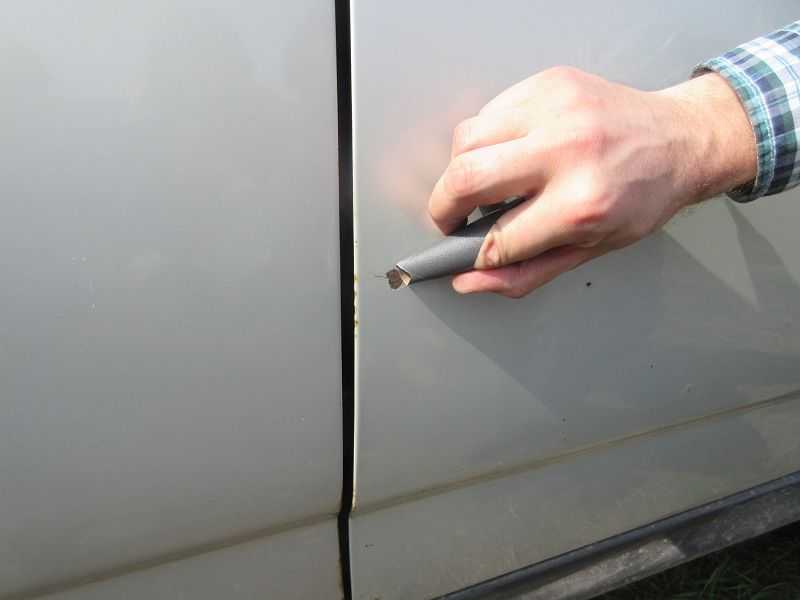
Should you have similar problems in the future try cooking oil or WD-40 and I think it will work without doing damage to the paint.
Reply Was this helpful? Yes
A bicyclist scraped the fender of my new black VW with his rubber handlebar. It is not scratched, but there is a streak of rubber about 5" long on the side of my fender.
How can I remove it without damaging the paint?
Mary Lou
September 2, 20150 found this helpful
My husband says just wash it off without using anything abrasive, rub it with your thumb and a little water and mild soap or even just water.
Reply Was this helpful? Yes
Try some WD-40.
Reply Was this helpful? Yes
Louise B.
Silver Feedback Medal for All Time! 337 Feedbacks
September 7, 20150 found this helpful
I agree with other posters. I think it would rub right off with a soft cloth.
Reply Was this helpful? Yes
Harlean
Bronze Post Medal for All Time! 148 Posts
January 15, 20160 found this helpful
Try some Awesome cleaner on a paper towel.
Reply Was this helpful? Yes
Anonymous
April 11, 20160 found this helpful
use wd40 and paper towel
Reply Was this helpful? Yes
msjelo99
July 21, 20160 found this helpful
I had two small nail polish marks near the door handle on my 2016 Toyota. I am sure I scuffed it with my nail when getting in my car. I wet the end of a cotton swab and dipped it in baking soda.
Advertisement
I rubbed it gently on the surface and then rubbed with a little more pressure with my thumb. Then I just wiped with a damp soft paper towel. It took the polish right off.
Reply Was this helpful? Yes
kishor0369
August 26, 20160 found this helpful
I have a issue related to wooden polish felt on my car exterior (on main screen mirror & left side body).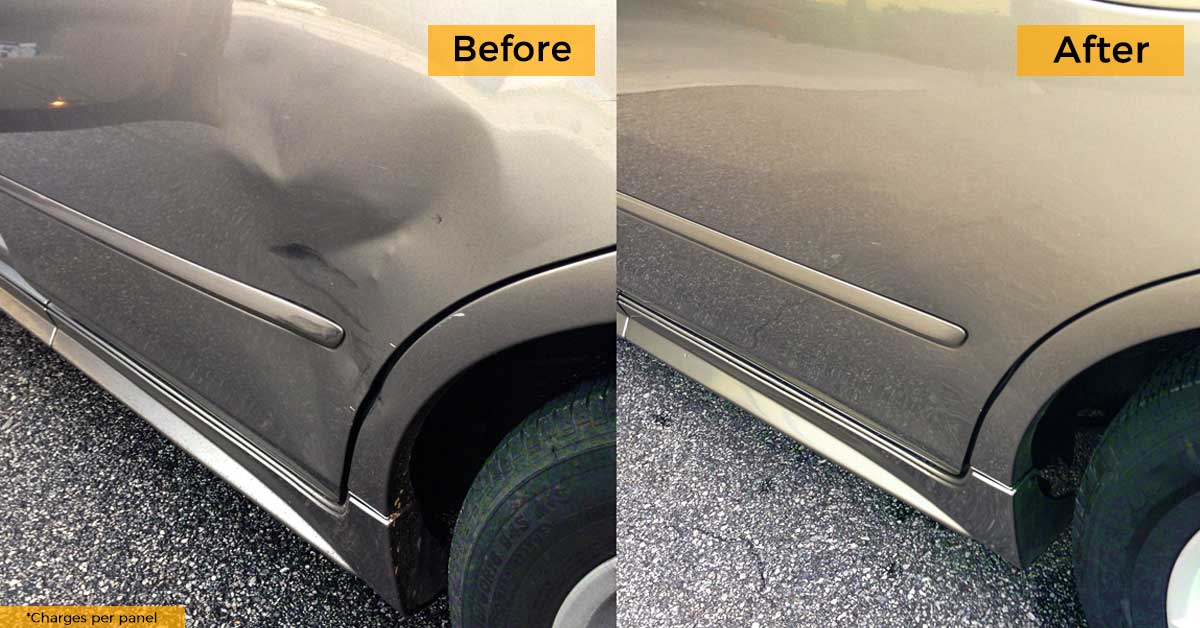 How can I remove it without damaging the paint? Please arrange to create the solution on urgent basis.
How can I remove it without damaging the paint? Please arrange to create the solution on urgent basis.
Reply Was this helpful? Yes
ThriftyFun is one of the longest running frugal living communities on the Internet. These are archives of older discussions.
Published by ThriftyFun.
Desktop Page | View Mobile
Disclaimer | Privacy Policy | Contact Us
Generated 2022-11-07 05:56:56 in 2 secs. ⛅️️
© 1997-2022 by Cumuli, Inc. All Rights Reserved.
https://www.thriftyfun.com/tf92408695.tip.html
Hello everyone! Today I will raise a question that regularly interests car owners. How to remove tape marks from a car? After all, as practice shows, it is not always easy to do this. If you are interested, this information is for you.
The article contains the most popular methods of dealing with adhesive tape on the body of a car. I will tell you how to remove the adhesive tape without scratching the paintwork of the car.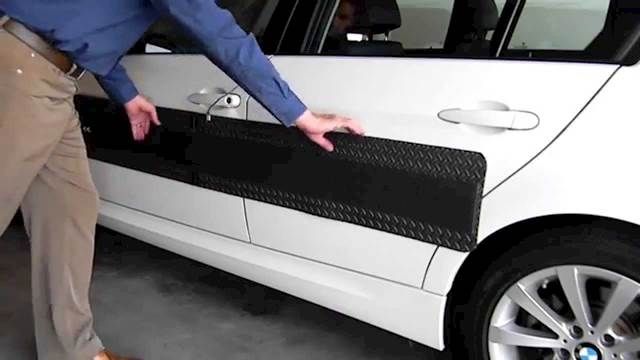 And also, I will share with you the personal experience of my friends who did this. I'll tell you how they managed to wash the tape.
And also, I will share with you the personal experience of my friends who did this. I'll tell you how they managed to wash the tape.
There are several ways to clean off sticky tape or stickers. Some will do it faster. And somewhere you need to make more effort. After all, spots are different - outdated, fresh, large, small. By the way, they can be after removing some badges, stickers, taxi signs, moldings or windshields. But the main thing in this matter is not to overdo it, so as not to damage the surface from which you remove the remnants of adhesive tape.
So, effective means include:
May help if the trace is fresh. It can be liquid dishwashing detergent or window cleaner. Apply to the stain, let it soak in well.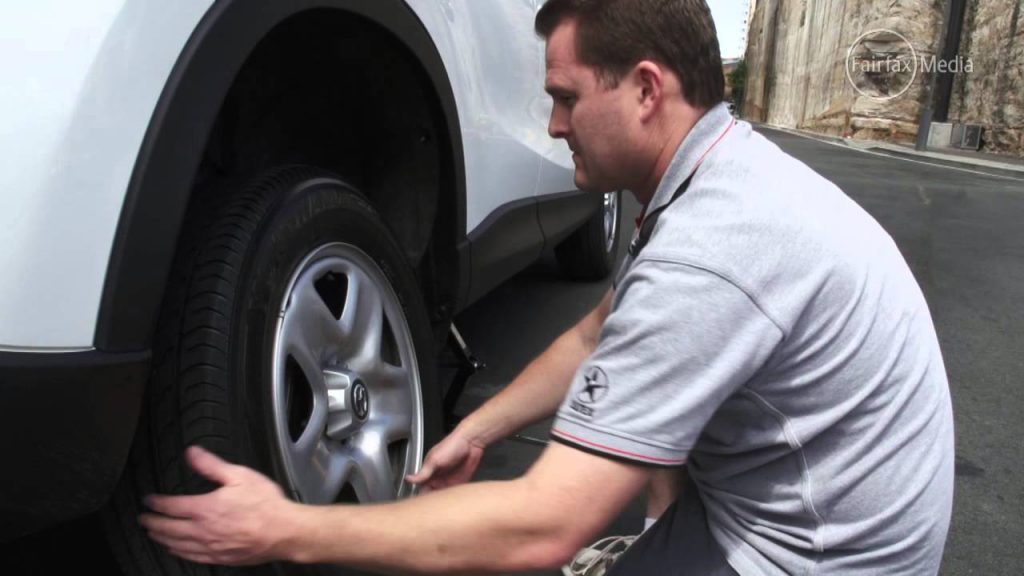 But don't rub too hard. In general, do not use any hard sponges or rags. They can also damage the coating of the machine. For these purposes, it is better to take microfiber, it is soft and will not scratch the body. For a better effect, the product can be applied not only to the body, but also to the rag itself. I would call this method the light version. It won't help everyone get the job done.
But don't rub too hard. In general, do not use any hard sponges or rags. They can also damage the coating of the machine. For these purposes, it is better to take microfiber, it is soft and will not scratch the body. For a better effect, the product can be applied not only to the body, but also to the rag itself. I would call this method the light version. It won't help everyone get the job done.
By the way, when you try some product from your home arsenal, the main thing is that it did not contain any abrasives. Otherwise, you run the risk of severely scratching the surface to be cleaned.
Heating method
Cool method. It will help pick up glue from almost any surface. An ordinary hair dryer of good power will be enough. Direct the jet of hot air to the right place. You still need a regular plastic bank card. With it, you can immediately clean off the heated glue. Do not use a knife or other metal objects, as you will definitely scratch the surface, moreover, any.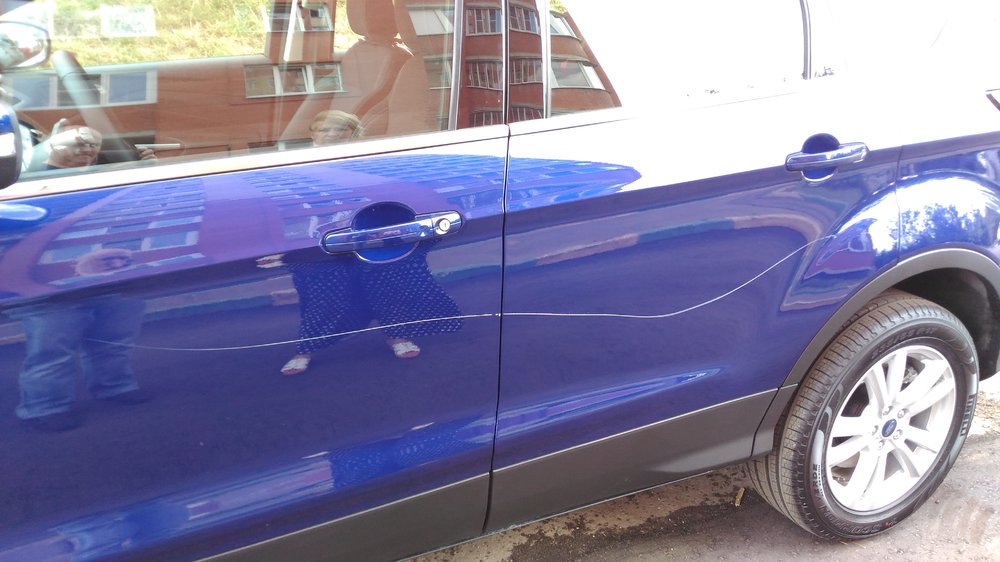
After removing the adhesive in this way, a slight roughness may remain. You can finally give the smoothness of the surface using the above method - dishwashing detergent. Or a nail polish remover that does not contain acetone. My colleague Irina has successfully used this heating method more than once. So I recommend it with confidence.
The well-known “Vedashka”. A miracle tool that helped more than one driver in different situations. And she will help here too. The product will loosen the adhesive well, and residues can be removed with soap and a clean cloth. It happens that the remedy needs to be applied several times. But don't overdo it. After such cleaning procedures, it is imperative to wash the surface that has been treated. Firstly, WD-40 is still an aggressive substance, the remnants must be removed. Secondly, it will leave greasy spots, to which dust, etc. can stick. Hence the strict rule - after cleaning, a good wash is needed.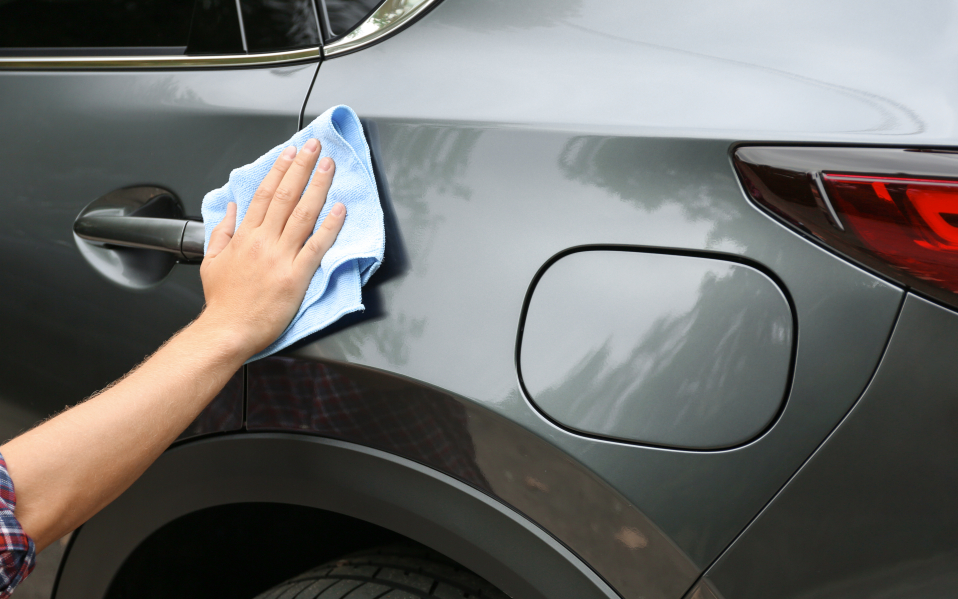
This refers to ordinary sunflower oil. The effectiveness of this method depends on the “old age” of the stain. Soak a cotton pad or cloth with oil and apply to the desired area. Rub the oil well into the glue. For the best effect, the oil can be heated. After a while, the glue can be removed. This method is also suitable for glass, plastic surfaces. My colleague Eugene thus removed the sticky layer from the sticker on the plastic. Moreover, before that I tried unsuccessfully many methods - there was a sticky stain. So ordinary sunflower oil will help not only fry potatoes.
Acetic acid works well on this kind of dirt. And it is difficult to damage the paint on the car, and this is important. Dilute ordinary table vinegar 1:1. Wet the stain well. Let stand for 30-40 minutes. Blot the sticky area from time to time. You can also remove the tape with a plastic card. You may need less time, see for yourself. How well does the stickiness come off.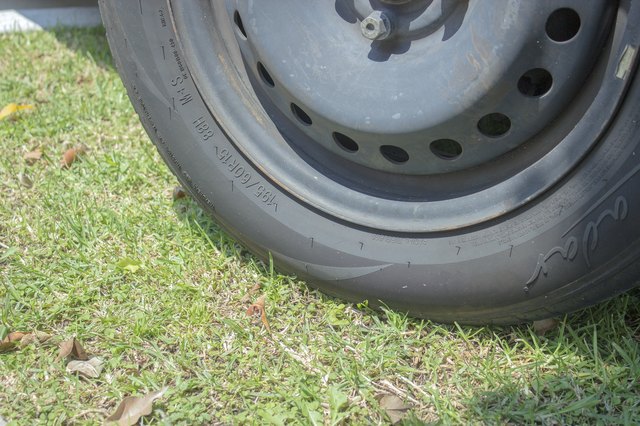
Yes! It is he who can be useful to you. But I want to say right away that this procedure may take longer than other methods. I advise you to use an eraser if the stain is small, otherwise it will take a very long time to rub. It will take time and effort to work. But on the other hand, it will be possible without harm to the paintwork to get rid of the remnants of adhesive tape and traces of glue.
An alternative to the eraser is a rubber nozzle, which is installed on a screwdriver or drill. If you have one, you can use it. But do it without pressure, otherwise there is a risk of damaging the paintwork itself. The method is fast and effective, so it can be used to remove old traces of adhesive tape that have strongly eaten into the body.
You can also use alcohol to remove tape residue from bodywork, glass or plastic. It dissolves the components of the adhesive tape well. However, as well as nail polish remover.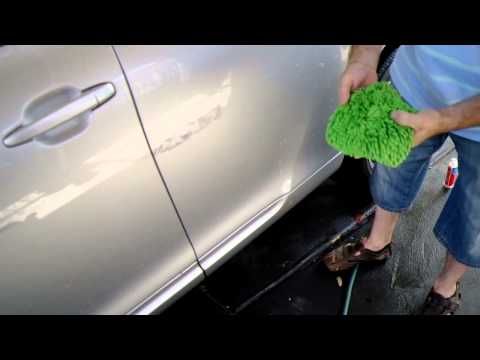 But you need one that does not contain acetone. Otherwise, you risk damaging the paint.
But you need one that does not contain acetone. Otherwise, you risk damaging the paint.
Solvents
Usually kerosene, refined gasoline or mineral spirits are used for this purpose. But with all solvents you need to be very careful. Because they can damage some types of synthetic materials. Also leave matte spots on the paintwork of the car. Handle these substances with gloves and outdoors. To see if this method is right for you, try using it somewhere in a small area in an inconspicuous place. If all is well, clean the entire surface boldly. After the procedure, it is recommended to wash the car with a special car shampoo.
There are special products called: “Anti-glue”, “Decal remover”, “Antiscotch”. But they will have to be bought, unlike other improvised means that I described. So choose for yourself. These products do not contain solvents. They mainly contain water, salt, acid, alcohol, surfactant. So there is also the question of how old a stain they can remove.
As you can see, removing the tape from the machine is not that difficult. The main thing is to decide on the method and try. Friends, have you ever had to remove sticky stains from a car body? How did you cope with this task? Share in the comments.
And if you have already removed all the stains, and your car shines with cleanliness, it's time to complete it with everything you need. Friends, our AUTOMARKET online store offers necessary and useful auto products, such as:
In the selection form on the site, specify the parameters of your car and see all compatible products. We work only with trusted manufacturers and guarantee 100% product compatibility with the selected car.
I hope you liked the article and the information was useful. Put "like", if you have any questions - write in the comments and we will answer them.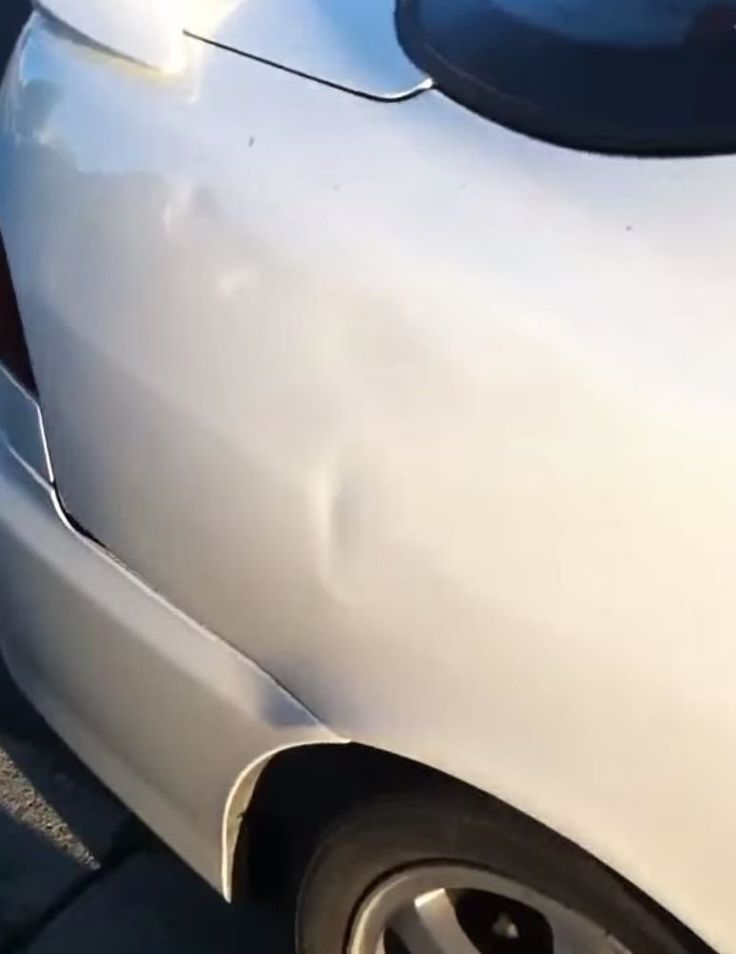 Share the article with your friends and subscribe to the email newsletter from AUTOMARKET.
Share the article with your friends and subscribe to the email newsletter from AUTOMARKET.
Wishing you a good road, AUTOMARKET - convenient for the motorist
Little bitumen. It looks unpleasant, but it does not pose a danger to the body. The correct way to remove it is to give the special staff time to work, that is, do not try to immediately wipe it off with a rag.
The degree of harmfulness is 2 out of 10. It is most likely found on any car that, by the will of fate, has to drive on the roads. Somewhere there is more of it, somewhere less, but you will almost certainly find characteristic black specks on the body. Bitumen does not pose a danger to the paintwork (LCP), it is washed off from any surfaces, it does not eat into it over time, so there is no urgency - you can ride with it for as long as you like.
What to clean? With special anti-bitumen compounds - this is if it’s in your mind. Petroleum based solvents. You can also use white spirit. At worst - kerosene or diesel fuel.
This mark can be identified as a linden that has eaten through the varnish. Such a stain is partially removed by polishing, but completely get rid of it fail.
The degree of harmfulness is 8 out of 10. Spring is the time not only for love, but also for resin. The degree of eating depends on the temperature: on a body warmed up under the sun - faster. It completely eats into the varnish and, if not removed in time, will remain forever - well, or until repainted. I strongly recommend that owners of cars with soft varnish, especially "Japanese women", especially hurry up with cleaning.
Resin should be removed as soon as possible. It eats up the varnish, craters remain on the paintwork, irreducible yellow spots on the light one. And the poplar one completely penetrates under the varnish and swells it from the inside. By the way, even a harmless-looking pear leaves marks that will have to be polished.
By the way, even a harmless-looking pear leaves marks that will have to be polished.
What to clean? Special formulations for wood buds. They are made on the basis of a mixture of solvents or citrus essential oils. Pros call such mixtures "oranges".
Whitish spots, mostly visible when the machine is dry.
| Lime stains and poplar bud marks. The resin stain was defeated only by abrasive polishing: it is removed along with the top layer of varnish. Lime stains and poplar bud marks. The resin stain was defeated only by abrasive polishing: it is removed along with the top layer of varnish. | Two cars — a Ford Focus and an Audi A6 — stood side by side in the same parking lot, where lime leaked from the ceiling. At Focus, after removing the drip of lime, swollen varnish was found; it was not possible to return it to its original appearance even after sanding with abrasives. Two cars — a Ford Focus and an Audi A6 — stood side by side in the same parking lot, where lime had leaked from the ceiling onto them. At Focus, after removing the drip of lime, swollen varnish was found; it was not possible to return it to its original appearance even after sanding with abrasives. On the Audi, the varnish remained intact, but I had to polish the traces of damage that arose after the owner of the car tried to wipe off the lime on his own. The photo shows the process of removing these traces with a special acid composition - it is clear that a chemical reaction is taking place. |
Related materials
Correct the face - how to restore the shine to the body
The degree of harmfulness is 6 out of 10. Such traces appear mainly on those cars that are based in underground parking lots, but they can also make shopping center customers happy. The consequences reveal themselves in the form of irreversible marks on the varnish; it is not always possible to defeat them by polishing.
Such traces appear mainly on those cars that are based in underground parking lots, but they can also make shopping center customers happy. The consequences reveal themselves in the form of irreversible marks on the varnish; it is not always possible to defeat them by polishing.
Can I clean myself? It will be possible to remove the streaks themselves, but it is not always possible to cope with the consequences of their activity - professional polishing may be required. And then the color of the body part.
What to clean? Specialized acid formulations are best used. If the case is not the most severe, try working on the lime with vinegar.
This is usually hot dust from the brake pads that flies out during braking and settles on the body. Moreover, it does not just settle, but literally bites into the varnish. And then it starts to rust, revealing itself as red dots, especially clearly visible on light cars.
The degree of harmfulness is 4 out of 10. Unpleasant, but not fatal. It is difficult to assess the degree of harmful effect on the varnish, the damage is mainly aesthetic.
Can I clean it myself? Yes, and with relatively little bloodshed - washing the car at the dacha or self-service car wash.
What to clean? Only special pH-neutral formulations that are labeled "disc cleaners" work well: they do an excellent job with such troubles.
Appears as a yellowish oily film. They are especially noticeable on cars that are stored in warm parking lots.
The degree of harmfulness is 2 out of 10.
Can I clean it myself? During washing - yes.
What to clean? Antibituminous compounds, because the nature of the contamination is similar to bituminous.
Chitin, blood!
Insects that have eaten into the paintwork.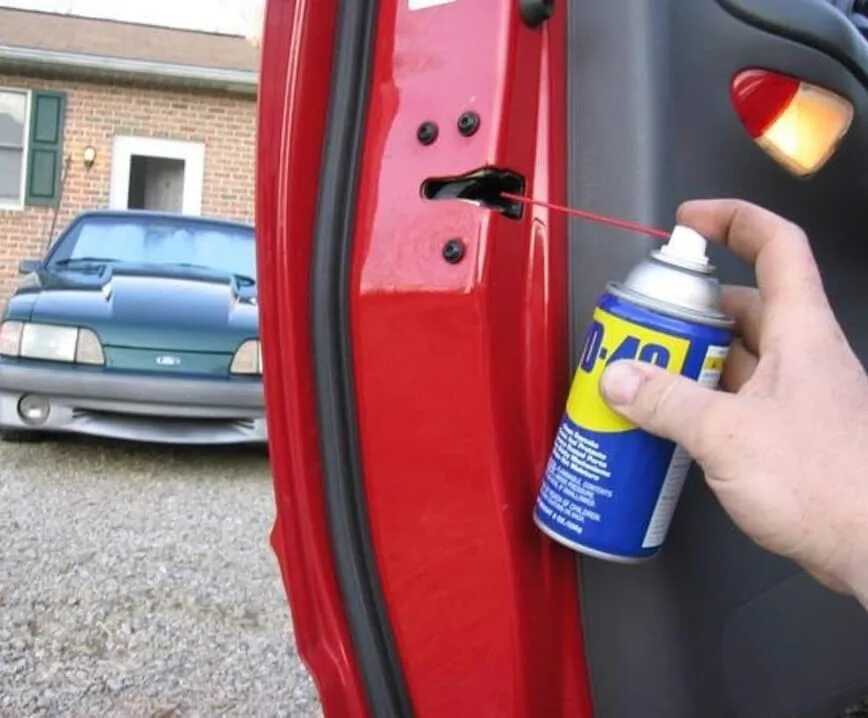 And here you can’t do without polishing.
And here you can’t do without polishing.
Insects that have eaten into the paintwork. And here you can’t do without polishing. Hazard rating 8 out of 10 It's hot, the traffic jam, the hood got hot - and went to collect the "harvest". Insects flatten themselves on the car, leaving characteristic marks that eat into the varnish.
Can I clean it myself? Possible. Sprayed, washed off - nothing complicated. But you need a special composition.
What to clean? If the car was not hot, and the insects did not spend too much time on the hood, then a regular car shampoo will do the trick. If the varnish is not hard enough, and the body was heated at the time of the murder, then special equipment is indispensable. And if the car sits for a week in the heat in the company of dead flies, then you will have to pay a visit to the polishers.
There is no need to explain anything here.
Traces of bird droppings that were not washed away in time. At the car wash, they can no longer cope with this ailment - you will have to contact the polisher.
At the car wash, they can no longer cope with this ailment - you will have to contact the polisher.
Traces of bird droppings that were not washed away in time. At the car wash, they can no longer cope with this ailment - you will have to contact the polisher.
The degree of harmfulness is 10 out of 10. Time is working against you. As long as the excrement is on the body, they will tend to penetrate deep into the paintwork. And even more: the substance passes through the paintwork to the metal, swells the varnish and damages the base paint layer. In this case, you will have to recolor the element.
Can I clean it myself? Not only possible, but also necessary - as soon as you notice.
What to clean? At least plain water or a damp cloth. If it was not possible to immediately wash it off with water, then no means will help: only polishing or repainting.
Related materials
Home remedies instead of car chemicals: expert advice
This is an epoxy-based paint with high adhesion and wear resistance.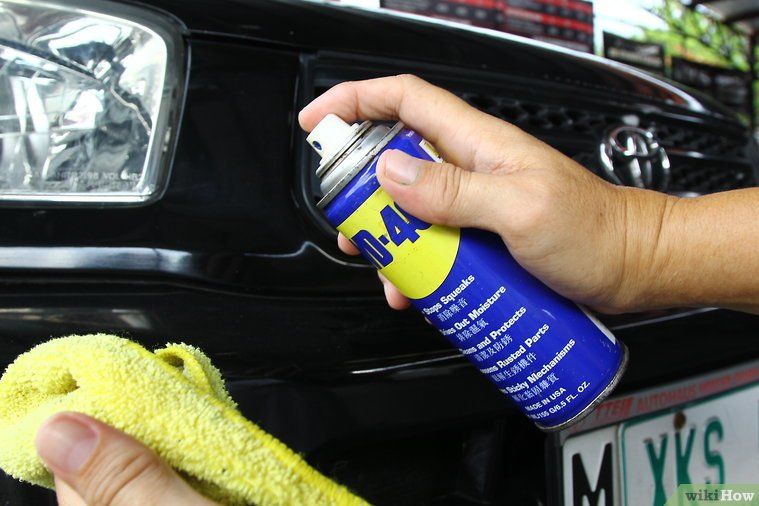 You can pick it up on wet markings.
You can pick it up on wet markings.
The degree of harmfulness is 10 out of 10.
Can I remove it myself? If it's a simple yellow paint used to mark a parking lot, then alcohol, such as isopropyl, will do. Or a kidney remover. But if this is downright white markings, then it’s better not to even try - such paint will have to be removed by abrasive means. You can call on polishing clay to help, but after that the cleaned places will have to be polished.
What to clean? See paragraph above. It all depends on the wear resistance class of the markup. If alcohol-containing formulations fail, go to the professionals.
Related materials
Armor cosmetics: comparing protective body polishes
Paint drizzle flies from the facades of buildings, bridge supports and other metal structures during all kinds of repair work - the wind to help her.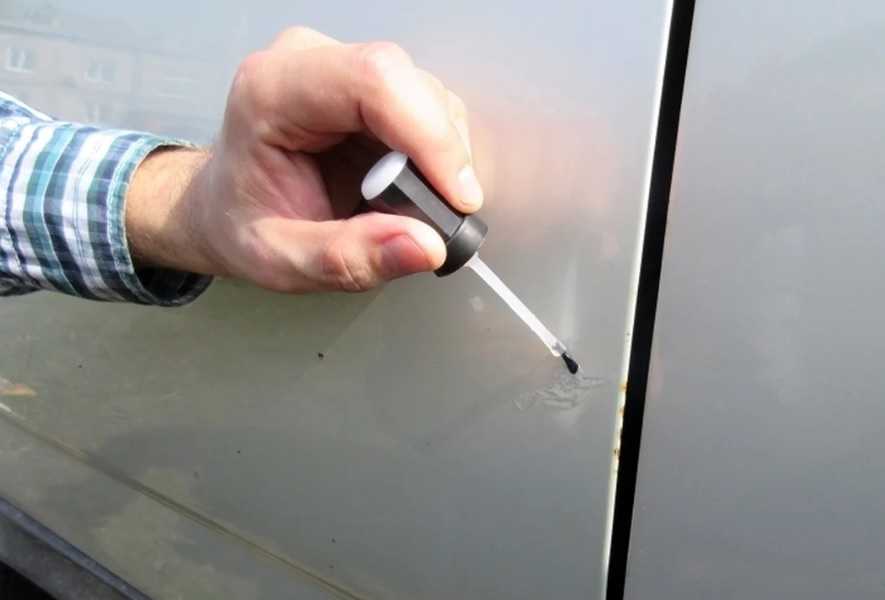 In general, whenever a city is put in order, the cars get into a mess.
In general, whenever a city is put in order, the cars get into a mess.
The degree of harmfulness is 10 out of 10. Someone else's paint can stay on the body forever and force you to do a complete repaint.
Can I clean it myself? Only if the contamination is fresh. You will have to use a solvent designed for this type of paint.
What to clean? Water-based emulsion, while fresh, can be washed off with water, if dried, try wiping with alcohol. Paint based on white spirit - white spirit, respectively. And if it is an industrial, especially resistant paint? In general, the main problem is to determine the type of paint. And we must not forget that the varnish can “matte” (become dull), and a vigorous solvent like “646” can swell the top layer of the varnish or completely remove it - in general, anything can happen. And then you have to polish the surface.
It is easy to find near the construction site: you never know where you have to leave the car in the city. A drop of concrete is a real nuisance.
A drop of concrete is a real nuisance.
The degree of harmfulness is 10 out of 10.
Can I remove it myself? Yes, if you have experience and chemical education, as well as a certain courage. If you have the above, look in building markets for a tile cleaner that washes away building mixtures.
What to clean? Will have to dissolve. Professionals use aggressive acids, which must be promptly removed from the paintwork in order to avoid damaging it. The procedure will have to be repeated several times. And in any case, in the final you can not do without polishing.
Related content
As a polish: testing car body paint care products
If you decide to deal with pollution yourself, there are a few simple rules to follow. After applying the cleaning composition to the surface, let it work. If normal flushing with water is not enough, microfiber should be used. In no case do not wipe with pressure - only with light movements. The most important thing: the machine must be clean during operation, otherwise you can scratch the paintwork. Most likely, sand is present in the body of pollution, and it will rub off the varnish on your car: a clean and smooth speck surrounded by a hazy halo will remain in place of the dirt.
In no case do not wipe with pressure - only with light movements. The most important thing: the machine must be clean during operation, otherwise you can scratch the paintwork. Most likely, sand is present in the body of pollution, and it will rub off the varnish on your car: a clean and smooth speck surrounded by a hazy halo will remain in place of the dirt.
* * *
The professional chemistry line includes cleaners for everything from reaction metal cleaner and tree bud remover to alcohol cleaner and bituminous cleaner. There are also fairly versatile products that can deal with both bitumen and traces of wood buds, stickers and other contaminants - and at the same time do not spoil rubber seals and plastic. And to remove stubborn metal (for example, dust from pads), which eventually turns into red dots, a special pH-neutral composition is used that dissolves these dots. It is curious that the purple color, which the composition turns into when it hits metal inclusions, is a kind of working indicator of a chemical reaction.